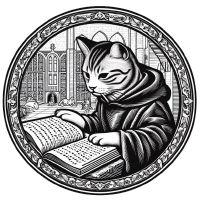Punctuation
Choice of signs
In medieval documents, the transcription of punctuation MUST be reduced to four main signs:
- "." [U+002E] is used for single dots,
- ":" [U+003A] is used for dots with more than single dots,
- "/" [U+002F] is used for diastoles and signs looking like virgulas.
- "¶" [U+00B6] is used for section markers.
In modern and contemporary sources, a greater variety of punctuation signs MUST be used in order to follow modern punctuation.
- Diastoles used as commas MUST be transcribed with "/" [U+002F].
- Exclamation marks, question marks and such sign must be represented as such.
- However, the transcription of dashes MUST be reduced to one sign: "-" [U+002D] sign.
Reference marks
In medieval documents, note-calling and insertion signs MUST be transcribed with the CARET sign "‸" [U+2038].
In modern and contemporary documents, reference marks, such as "*" [U+002A] or "※" [U+203B] MUST be transcribed as "*" [U+002A]. Referencing signs such as "§" [U+00A7] MUST be transcribed as it appears.
Quotation marks and apostrophes
Any character functioning as a marker for quotation, from French quotation mark to single quotation mark, are transcribed as standard unicode Quotation Mark [U+0022] "
Apostrophes are transcribed as Single Quotation Mark ' [U+0027].
Spacing around punctuation
Spacing MUST be normalized before and after punctuation. There should always be a space after a punctuation sign (except "(", "[" or "⟦", etc.) but there should not be a space before a punctuation sign.
Dotted and dashed lines
When several punctuation signs are used to fill a blank between two lines (as in "name: ........Jane...."), we MAY not try to type as many signs as traced, and rather to limit ourselves to 4 repetitions of the same symbol.
A simple dash ("-" [U+002D]) MAY be used, rather than "_" [U+005F] to transcribed dashed lines.

